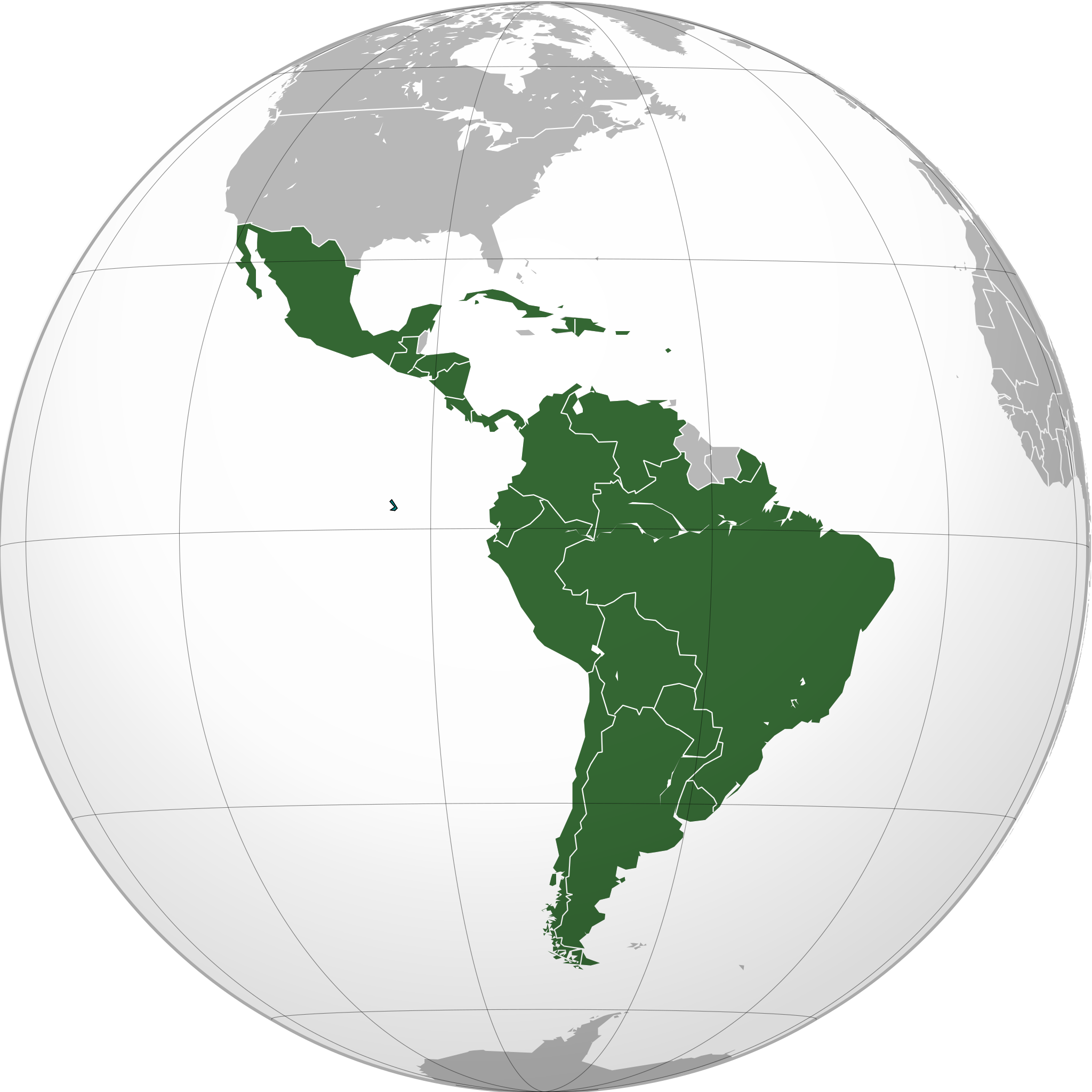No edit summary |
No edit summary Tag: Visual edit: Switched |
||
| Line 1: | Line 1: | ||
{{Infobox country|image_map=Latin America.png|map_width=200px|population_estimate=642,216,682|population_estimate_year=2018|area_km2=20,111,457|largest_city=São Paulo|name=Latin America|native_name=América Latina<br>Amérique Latine|common_languages=Spanish<br>Portuguese<br>French}} | {{Infobox country|image_map=Latin America.png|map_width=200px|population_estimate=642,216,682|population_estimate_year=2018|area_km2=20,111,457|largest_city=São Paulo|name=Latin America|native_name=América Latina<br>Amérique Latine|common_languages=Spanish<br>Portuguese<br>French}} | ||
''' | '''Iberoamerica''' is the part of the [[America|Americas]] where languages developed in the Iberian Peninsula are mainly spoken.<ref>{{Citation|author=Real Academia Española y Asociación de Academias de la Lengua Española|year=2005|title=Iberoamérica|chapter=|section=|page=|quote=|pdf=|city=Madrid|publisher=Diccionario panhispánico de dudas|isbn=978-8-429-40623-8|doi=|lg=|mia=|title-url=https://www.rae.es/dpd/Iberoam%C3%A9rica|chapter-url=|trans-title=|trans-lang=}}</ref> It includes [[Mexico]], most of [[South America|South]] and [[Central America]], and much of the [[Caribbean]]. Because of its proximity to the United States, it is often targeted by the United States and there have been 56 US military interventions in the region.<ref>{{News citation|journalist=Hakim|date=2019-11-30|title=America Never Stood For Freedom|url=https://www.youtube.com/watch?v=-HflHrHvYsw|newspaper=YouTube|archive-url=|archive-date=|retrieved=2022-01-04}}</ref> | ||
== References == | == References == | ||
<references /> | <references /> | ||
Revision as of 17:29, 15 November 2022
| Latin America América Latina Amérique Latine | |
|---|---|
 | |
| Largest city | São Paulo |
| Common languages | Spanish Portuguese French |
| Area | |
• Total | 20,111,457 km² |
| Population | |
• 2018 estimate | 642,216,682 |
Iberoamerica is the part of the Americas where languages developed in the Iberian Peninsula are mainly spoken.[1] It includes Mexico, most of South and Central America, and much of the Caribbean. Because of its proximity to the United States, it is often targeted by the United States and there have been 56 US military interventions in the region.[2]
References
- ↑ Real Academia Española y Asociación de Academias de la Lengua Española (2005). Iberoamérica. Madrid: Diccionario panhispánico de dudas. ISBN 978-8-429-40623-8
- ↑ Hakim (2019-11-30). "America Never Stood For Freedom" YouTube. Retrieved 2022-01-04.